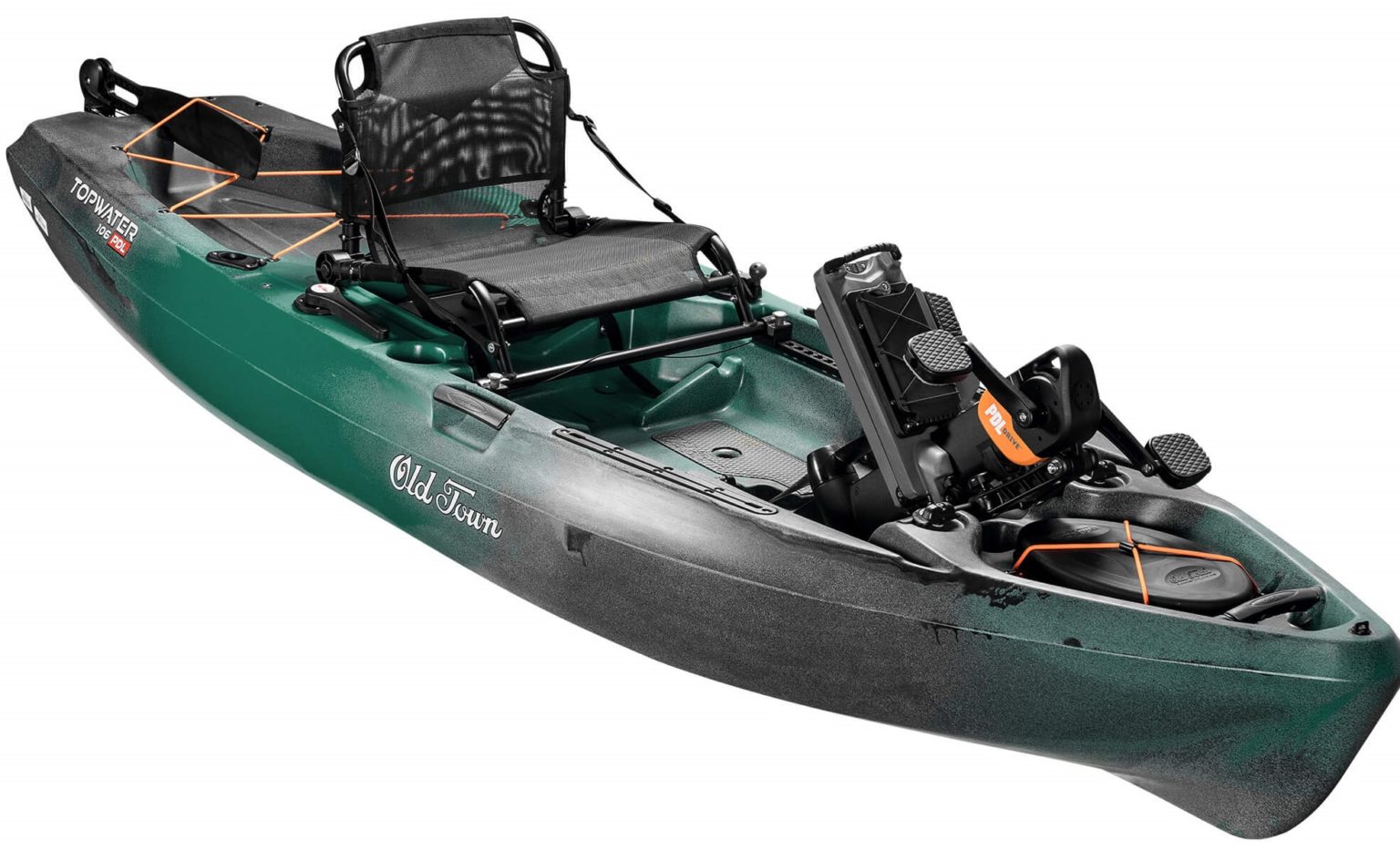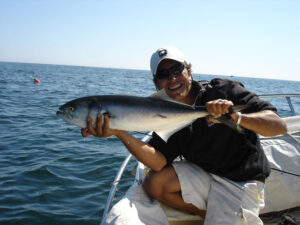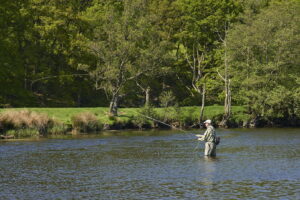Introduction
If you are a fishing enthusiast, you know that finding the perfect fishing spot can be a game-changer. One of the most effective ways to access remote and undisturbed fishing locations is by using a river fishing kayak. River fishing kayaks are specifically designed to navigate through rivers, giving you the opportunity to explore untouched fishing grounds. In this comprehensive guide, we will delve into the world of river fishing kayaks, exploring their features, benefits, and how to choose the right one for your needs.
Chapter 1: The Advantages of River Fishing Kayaks
1.1 Access to Remote Fishing Spots
One of the greatest advantages of river fishing kayaks is their ability to access remote fishing spots that are inaccessible by larger boats. Rivers often wind through scenic and untouched areas, providing a serene fishing experience. With a river fishing kayak, you can paddle through narrow channels and reach secluded spots where fish are plentiful and less pressured.
1.2 Stealth and Quietness
When it comes to fishing, stealth is key. Traditional motorized boats can scare away fish with their noise and disturbance. River fishing kayaks, on the other hand, allow you to silently glide through the water, minimizing your impact on the surrounding environment. This increased stealth and quietness give you a better chance of catching fish that are not spooked by your presence.
1.3 Maneuverability
River fishing kayaks are designed to be highly maneuverable, making them perfect for navigating through narrow river channels, shallow waters, and tight spots. Their compact size and lightweight construction allow you to easily paddle through tight turns and around obstacles, giving you the ability to explore even the most inaccessible fishing spots.
1.4 Physical Fitness
Paddling a river fishing kayak requires physical exertion, which can be a great form of exercise. Not only will you enjoy the thrill of fishing, but you will also benefit from the cardiovascular workout that kayaking provides. It’s a win-win situation where you can have fun and stay fit at the same time.
Chapter 2: Features to Consider in a River Fishing Kayak
2.1 Stability
When it comes to river fishing kayaks, stability is paramount. Look for kayaks with a wide and flat hull design, as these provide better stability in moving water. Additionally, kayaks with a lower center of gravity and a wider beam tend to offer more stability, allowing you to stand up and cast your line with confidence.
2.2 Durability
River fishing can be an adventurous and sometimes rough activity. Therefore, it is important to choose a kayak that is built to withstand the challenges of river fishing. Look for kayaks made from high-quality materials such as polyethylene or rotomolded plastic, as these are known for their durability and ability to withstand impacts from rocks and other obstacles.
2.3 Weight Capacity
Consider the weight capacity of the kayak to ensure it can handle your weight and any additional gear you might bring along. It’s important to choose a kayak that can comfortably support your weight without compromising stability or maneuverability.
2.4 Storage Space
Having ample storage space is essential for river fishing. Look for kayaks that offer enough storage compartments and bungee cords to secure your fishing gear, tackle boxes, and personal belongings. Some kayaks even come with specific features such as rod holders and built-in tackle boxes for added convenience.
2.5 Comfort
Spending hours on the water can take a toll on your comfort if your kayak lacks proper seating and support. Look for kayaks with adjustable and padded seats, as well as adjustable footrests to ensure a comfortable paddling position. Additionally, consider kayaks with a sit-on-top design, as they provide better ventilation and freedom of movement.
Chapter 3: How to Choose the Right River Fishing Kayak
3.1 Consider the Water Conditions
Before choosing a river fishing kayak, it’s important to consider the water conditions you will be fishing in. If you plan to fish in calm rivers or lakes, a recreational kayak might be suitable. However, if you anticipate encountering strong currents or rapids, you will need a kayak with more stability and maneuverability.
3.2 Test the Kayak
Whenever possible, try out different kayaks before making a purchase. Most kayak retailers offer the opportunity to test their kayaks on the water. This will give you a feel for the kayak’s stability, maneuverability, and overall comfort. Testing a kayak will also allow you to assess whether it meets your specific needs and preferences.
3.3 Consider Your Fishing Style
Every angler has their own fishing style, and this should be taken into account when choosing a river fishing kayak. If you prefer fly fishing, for example, you may want a kayak that provides ample standing space and stability. On the other hand, if you enjoy trolling, a kayak with built-in rod holders and storage compartments for your fishing gear would be more suitable.
3.4 Budget
Like any other purchase, your budget will play a role in determining the river fishing kayak you can afford. Set a budget range and look for kayaks within that range that meet your desired features and specifications. Remember, a higher price tag doesn’t always guarantee a better kayak, so be sure to read reviews and consider the overall value for money.
Chapter 4: Tips for River Fishing Kayaking
4.1 Dress Appropriately
When heading out on a river fishing kayak adventure, it’s important to dress appropriately for the weather conditions. Wear lightweight, moisture-wicking clothing to stay comfortable and dry. Additionally, consider wearing a hat and sunglasses to protect yourself from the sun’s rays.
4.2 Plan Your Route
Before setting out, plan your route and familiarize yourself with the river you will be kayaking on. Take note of any potential hazards such as rocks, rapids, or fallen trees. Having a plan will ensure a safer and more enjoyable fishing experience.
4.3 Bring Essential Safety Gear
Safety should always be a top priority when kayaking. Ensure you have essential safety gear such as a personal flotation device (PFD), a whistle, and a waterproof first aid kit. It’s also a good idea to bring a kayak-specific rescue rope in case of emergencies.
4.4 Practice Proper Paddling Techniques
Before hitting the water, familiarize yourself with proper paddling techniques. This will not only make your kayaking experience more enjoyable but also help you navigate through rivers more efficiently. Consider taking a kayaking course or watching online tutorials to improve your skills.
4.5 Respect the Environment
When river fishing kayaking, it’s important to respect the environment and leave no trace behind. Avoid littering, dispose of any waste properly, and follow any specific regulations or rules set by the local authorities. By being a responsible angler, you can help preserve the natural beauty of the rivers for future generations.
Conclusion
River fishing kayaks offer a unique and exciting way to explore remote and untouched fishing spots. With their maneuverability, stealth, and access to secluded areas, river fishing kayaks provide a thrilling fishing experience. When choosing a river fishing kayak, consider factors such as stability, durability, weight capacity, storage space, and comfort. Test different kayaks, consider your fishing style, and set a budget range to find the perfect kayak for your needs. Remember to dress appropriately, plan your route, bring essential safety gear, practice proper paddling techniques, and respect the environment when river fishing kayaking. With the right kayak and knowledge, you can embark on unforgettable fishing adventures on rivers around the world.
FAQs
Q1: Can I stand up on a river fishing kayak?
Yes, many river fishing kayaks are designed to provide stability and allow you to stand up while fishing. Look for kayaks with a wider beam and a lower center of gravity for better stability when standing.
Q2: Can I use a river fishing kayak in the ocean?
While river fishing kayaks are primarily designed for river use, some models can be used in calm coastal waters. However, it is important to exercise caution and choose a kayak suitable for ocean conditions if you plan to venture into the ocean.
Q3: Are river fishing kayaks comfortable?
River fishing kayaks come in various designs and offer different levels of comfort. Look for kayaks with adjustable and padded seats, adjustable footrests, and a sit-on-top design for better ventilation and freedom of movement.
Q4: How do I transport a river fishing kayak?
Transporting a river fishing kayak can be done using a kayak roof rack or a kayak trailer. Make sure to secure the kayak properly and follow the manufacturer’s guidelines for transportation.
Q5: What fishing techniques can I use with a river fishing kayak?
You can use various fishing techniques with a river fishing kayak, including casting, trolling, andfly fishing. The versatility of river fishing kayaks allows you to adapt to different fishing styles and techniques. Whether you prefer to cast your line into calm pools or troll along the river, a river fishing kayak provides the platform you need for a successful fishing trip.
Q6: Are river fishing kayaks suitable for beginners?
Yes, river fishing kayaks can be suitable for beginners. However, it’s important for beginners to take some time to familiarize themselves with kayaking techniques and safety precautions before venturing out on the water. Starting in calm and slow-moving rivers can also be a good idea for beginners to gain confidence and practice their paddling skills.
Q7: What should I do if my river fishing kayak flips over?
If your river fishing kayak flips over, it’s important to stay calm and follow proper safety procedures. First, try to stay with your kayak as it will provide flotation. If possible, grab onto the kayak and try to flip it back over. If you’re unable to flip it back, swim to the nearest shore or wait for assistance while holding onto your kayak for support.
Q8: Can I use a river fishing kayak for overnight camping trips?
While some river fishing kayaks offer storage space for camping gear, they may not provide enough room for overnight trips. However, there are specialized kayaks designed for kayak camping that offer more storage space, stability, and comfort for extended trips. If you plan to go on overnight camping trips, it’s recommended to invest in a kayak specifically designed for that purpose.
Q9: How can I improve my casting accuracy from a river fishing kayak?
Improving casting accuracy from a river fishing kayak takes practice and technique. One tip is to practice casting from a seated position in your kayak to get a feel for the motion and space limitations. Additionally, adjusting your body position and using shorter, more controlled casting motions can help improve accuracy. Experimenting with different lure weights and practicing in different river conditions can also help you become more accurate with your casts.
Q10: Can I use a river fishing kayak for fishing in fast-flowing rivers?
While river fishing kayaks are designed to handle moving water, it’s important to consider the specific conditions of fast-flowing rivers. Rapid currents and whitewater can present additional challenges and risks. If you plan to fish in fast-flowing rivers, make sure to choose a kayak with excellent stability and maneuverability. It’s also recommended to have experience and proper kayaking skills for navigating through fast-moving water.
Summary
River fishing kayaks offer anglers the opportunity to explore remote and untouched fishing spots that are inaccessible by larger boats. With their maneuverability, stealth, and access to secluded areas, river fishing kayaks provide an exciting and unique fishing experience. When choosing a river fishing kayak, it’s important to consider factors such as stability, durability, weight capacity, storage space, and comfort. Testing different kayaks and considering your fishing style will help you find the perfect kayak for your needs. Dressing appropriately, planning your route, bringing essential safety gear, practicing proper paddling techniques, and respecting the environment are important aspects to consider when river fishing kayaking. By following these tips and guidelines, you can embark on unforgettable fishing adventures on rivers around the world with your trusty river fishing kayak.
FAQs
Q1: Can I stand up on a river fishing kayak?
Yes, many river fishing kayaks are designed to provide stability and allow you to stand up while fishing. Look for kayaks with a wider beam and a lower center of gravity for better stability when standing.
Q2: Can I use a river fishing kayak in the ocean?
While river fishing kayaks are primarily designed for river use, some models can be used in calm coastal waters. However, it is important to exercise caution and choose a kayak suitable for ocean conditions if you plan to venture into the ocean.
Q3: Are river fishing kayaks comfortable?
River fishing kayaks come in various designs and offer different levels of comfort. Look for kayaks with adjustable and padded seats, adjustable footrests, and a sit-on-top design for better ventilation and freedom of movement.
Q4: How do I transport a river fishing kayak?
Transporting a river fishing kayak can be done using a kayak roof rack or a kayak trailer. Make sure to secure the kayak properly and follow the manufacturer’s guidelines for transportation.
Q5: What fishing techniques can I use with a river fishing kayak?
You can use various fishing techniques with a river fishing kayak, including casting, trolling, and fly fishing. The versatility of river fishing kayaks allows you to adapt to different fishing styles and techniques.





